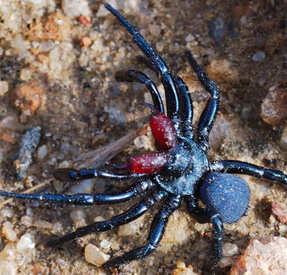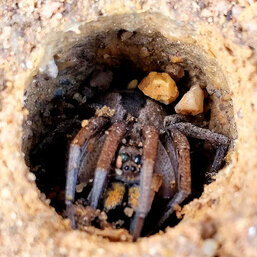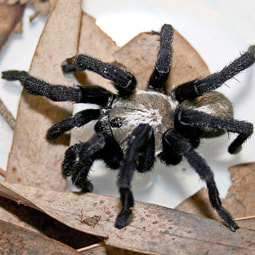Burrow spiders
- Most burrowing spiders are mygalomorph trapdoor spiders. - 'ancient' spiders that have reduced spinnerets, dagger-like fangs and two pairs of book lungs similar to ancestral ground-living spiders. Luckily we don't have true funnel web spiders. Trapdoor spiders are long lived and common in the bush but rarely seen because the females spend their lives in the burrow. Wandering males may be seen at night. Their burrows may have single or double or no trapdoor, and may have lines of silk of dead leaves leading to the burrow. Wandering male Red and black spiders may be mistaken for the similarly coloured Mouse spider but have much longer legs, eyes in two even rows, and lack downward facing fangs.
2 The sand curtain spider also has a burrow but in conjunction with a sandy web with conical retreats.
3 Wolf spiders also use burrows but are most commonly seen hunting outside.


